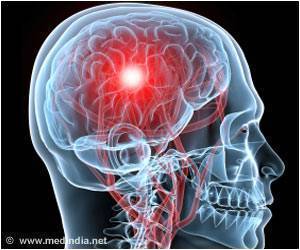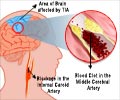The National Survey by UCLA finds 3 out of 4 young adults with stroke symptoms would delay a trip to the hospital.

‘Since the mid 90's, strokes in patients under the age of 45 have increased as much as 53 percent. Doctors say the first 3 hours after stroke are the most crucial for treatment.’





"Timely treatment for stroke is probably more important than for almost any other medical problem there is," said David Liebeskind, MD, professor of neurology, Director of Outpatient Stroke and Neurovascular Programs and Director of the Neurovascular Imaging Research Core at Ronald Reagan UCLA Medical Center. "There is a very limited window in which to start treatment because the brain is very sensitive to a lack of blood flow or to bleeding, and the longer patients wait, the more devastating the consequences." Researchers asked more than a thousand people nationwide what they would be likely to do within the first three hours of experiencing weakness, numbness, difficulty speaking or difficulty seeing, all common symptoms of a stroke. Among those under age 45, only about one out of three said they would be very likely to go to the hospital. A staggering 73 percent said they would likely wait to see if their symptoms improved.
"That's a real problem," said Liebeskind. "We need to educate younger people about the symptoms of stroke and convince them of the urgency of the situation, because the numbers are going up."
In fact, since the mid-1990's, the number of young adults between 18-45 discharged from U.S. hospitals after suffering a stroke has jumped as much as 53 percent. It's estimated someone has a stroke about every 40 seconds in the U.S., totaling nearly 800,000 new stroke patients a year.
In 2007, Jennifer Reilly was one of them. "I woke up in the middle of the night with an excruciating headache," said Reilly. "I was 27 years old, pretty active, pretty healthy and was not prone to headaches. I thought it was a really odd thing that happened."
Advertisement
Reilly says weeks before the headache, she would also experience numbness periodically in one of her hands. "Half of my left hand would turn numb, from just one second to the next," she said, "but, once again, I brushed it off as if it was nothing."
Advertisement
Ischemic stroke can happen to anyone at any age, and is often associated with high blood pressure, diabetes, smoking and obesity. "The good news is, there are steps we can take to lower our risk of stroke," said Liebeskind. A healthy diet and regular exercise, as well as not smoking and limiting alcohol consumption, have all been shown to lower your risk of stroke.
Just as important as knowing what puts you at a higher risk for stroke, is knowing the symptoms when you see them. Doctors urge you to know the signs of stroke and act "FAST."
If you or someone near you experiences - face drooping, arm weakness or speech difficulty, they should be given medical care. “Believe it or not, it's on the order of minutes or hours when somebody has to seek medical attention," said Liebeskind. "There simply is no time to wait. It's a message that we clearly need to get to younger people more effectively."
Source-Eurekalert















